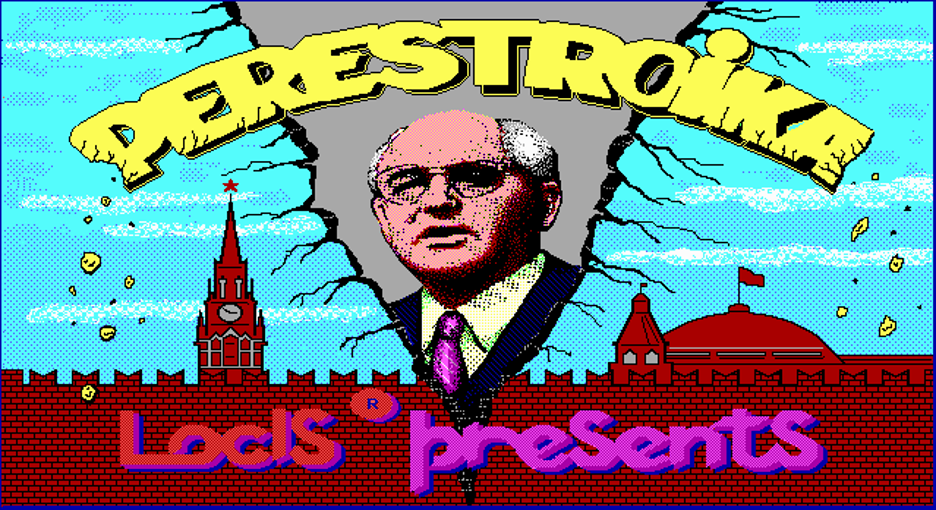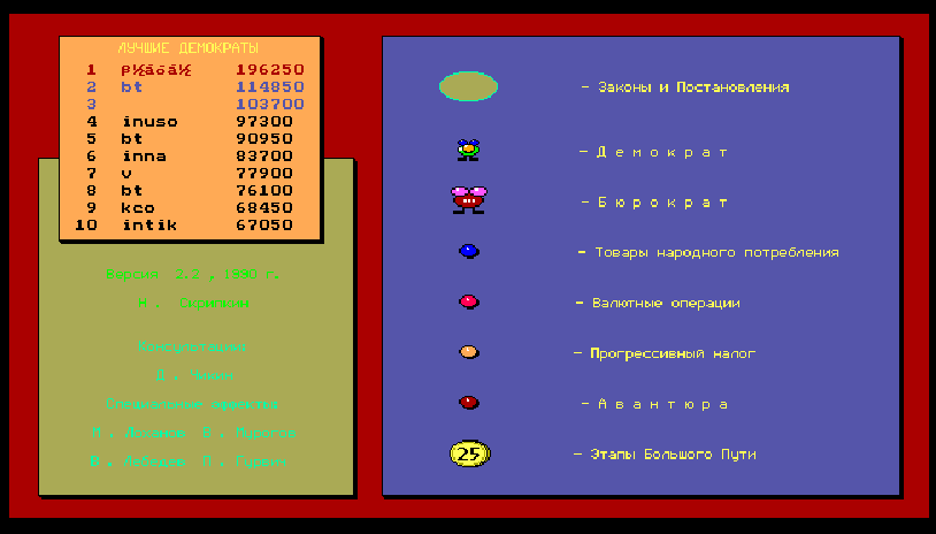Filed Under: Material culture > Entertainment > Nikita Skripkin and Locis Studio's "Perestroika" video game (1990-1998)
Nikita Skripkin and Locis Studio's "Perestroika" video game (1990-1998)
[2 items]
Perestroika, created by Nikita Skripkin in 1988 and released by Locis in 1990, is the first perestroika-era video game, sold by what would soon become one of the most ambitious post-Soviet game studios. Perestroika was not a particularly interesting game, being clearly far more indebted to the repetitive and reflexive gameplay of arcade classics like Q*bert (1982) than to its own ambitious theme.
While the game’s cover image represents Gorbachev rupturing Soviet reality in a symbolic gesture that tears apart the Kremlin wall, gameplay itself did not make good on this earth-shattering promise. The player controlled a character called the Democrat, a globular frog-creature possibly influenced by Hewson Consultant’s 1987 platformer Nebulus. The Democrat had to cross the screen from one side to the other, hopping across unstable and shrinking lilypads that the game identified as “laws.” Landing on empty spaces led to the avatar’s demise. Players could also receive boosts, colorful circles identified as “progressive taxes” (yellow), “consumer goods” (blue), “venture” (crimson) and “currency operations” (red). The player is perpetually pursued by Bureaucrats, who look like larger, redder versions of the player’s green avatar, and may represent flies, but act much like the ghosts in Pac-Man (1980), malevolently pursuing the player in an already unstable terrain.
What makes this game so striking is not so much its ludic depiction of new economic conditions, but rather the total incoherence of its attempt to convey them. Aside from demonizing the red bureaucrats and glamorizing democrats, the game succeeds only at mystifying the relevant issues while creating an implausibly political post-Soviet Pac-Man. Locis, which changed its name to NIKITA in 1991, would go on to become a major Post-Soviet game developer with several iconic titles that achieved international acclaim, including a spiritual sequel in The Siege on the White House (1993) and the ambitious Parkan: Chronicles of Empire (1997). The original Perestroika, meanwhile, is still playable in web browsers via an emulator.
It is doubtful that any 1990s player learned anything about “progressive taxes” or “venture capitalism” in the course of navigating shrinking disks and chasing colorful circles, but the game still exemplifies major features of post-Soviet game design: appropriation and borrowing from Western examples; ambitious political representations attempted with limited technical means; and unbreakable ties between independent developers and financially successful game studios.

